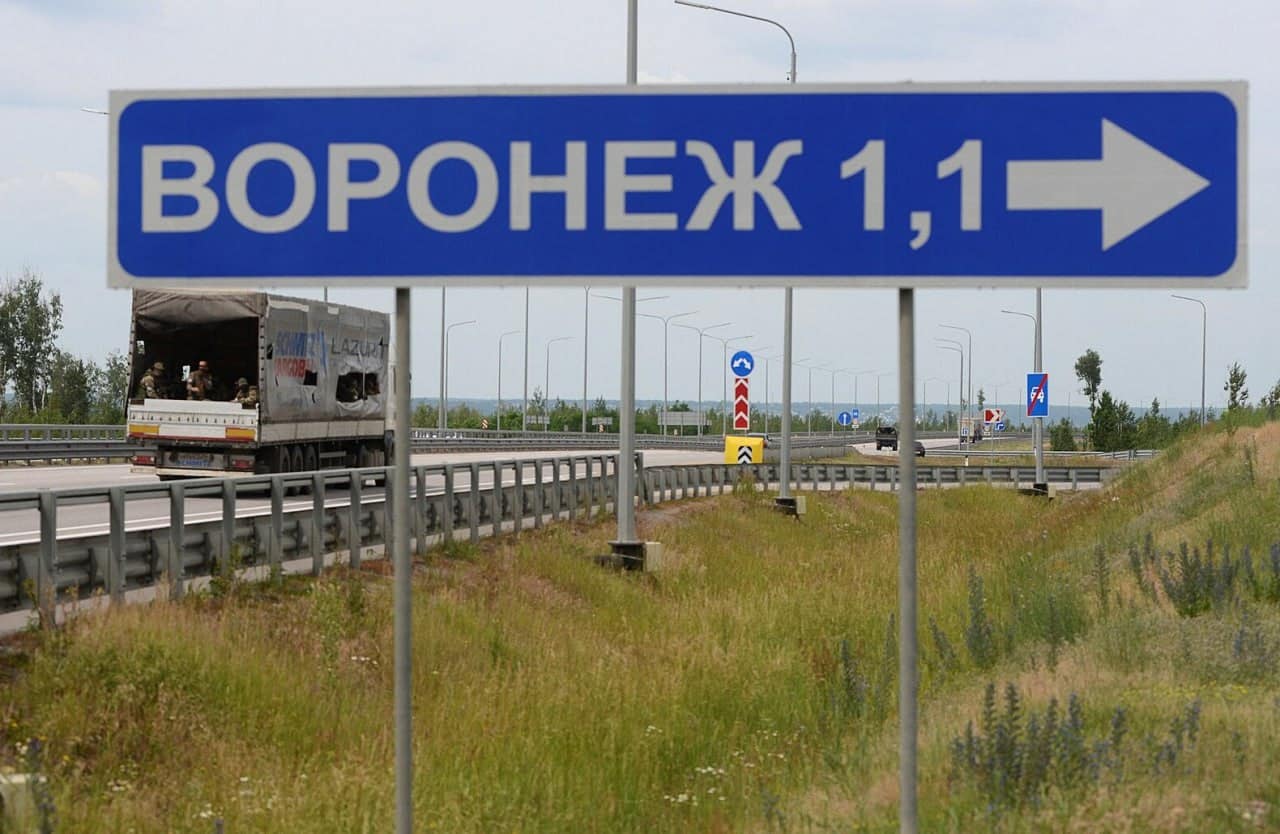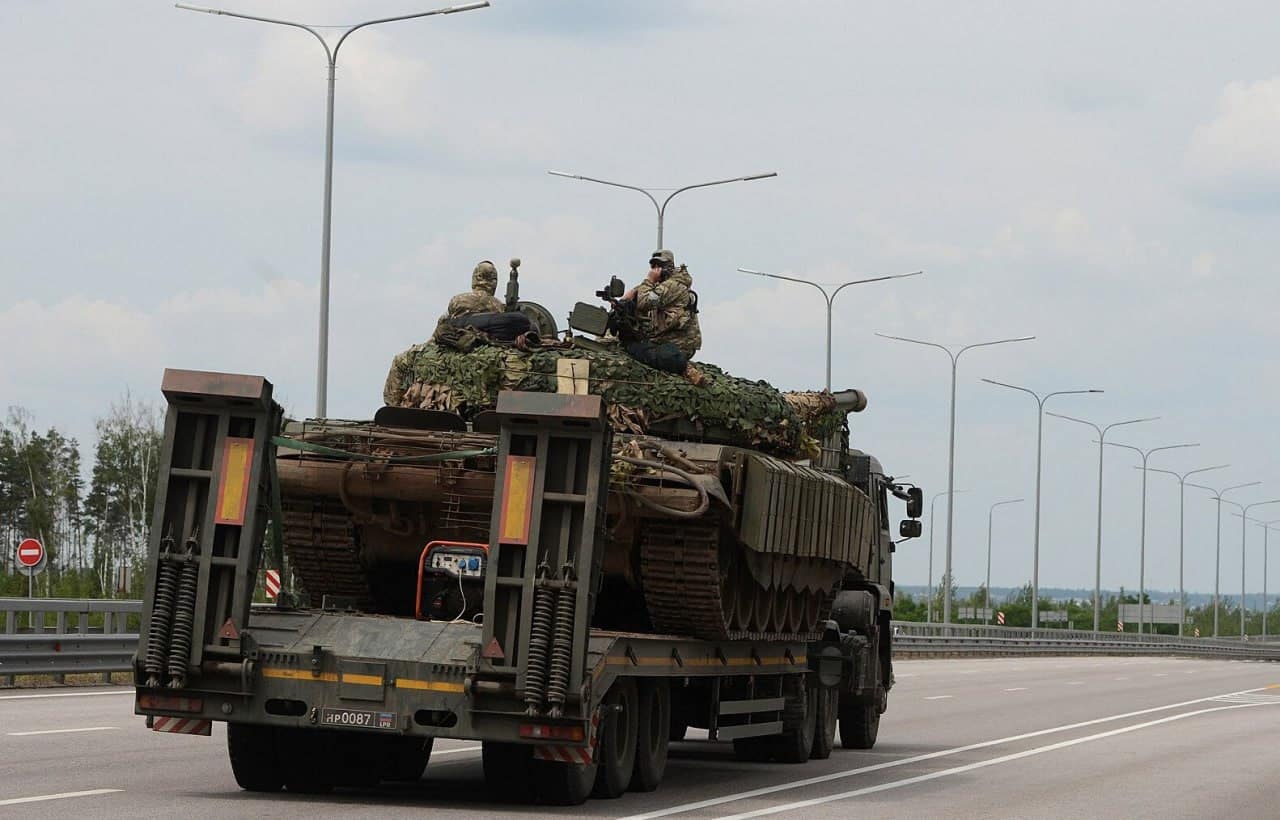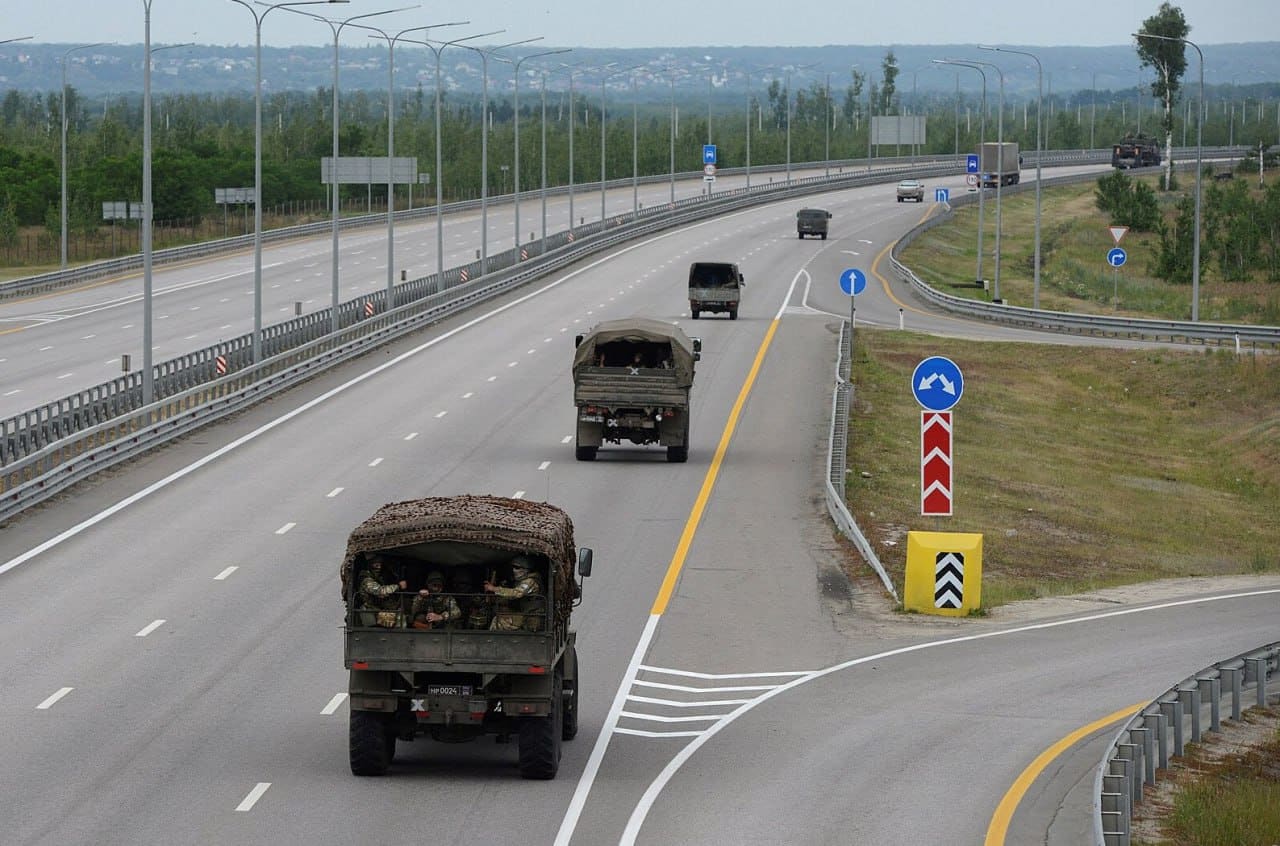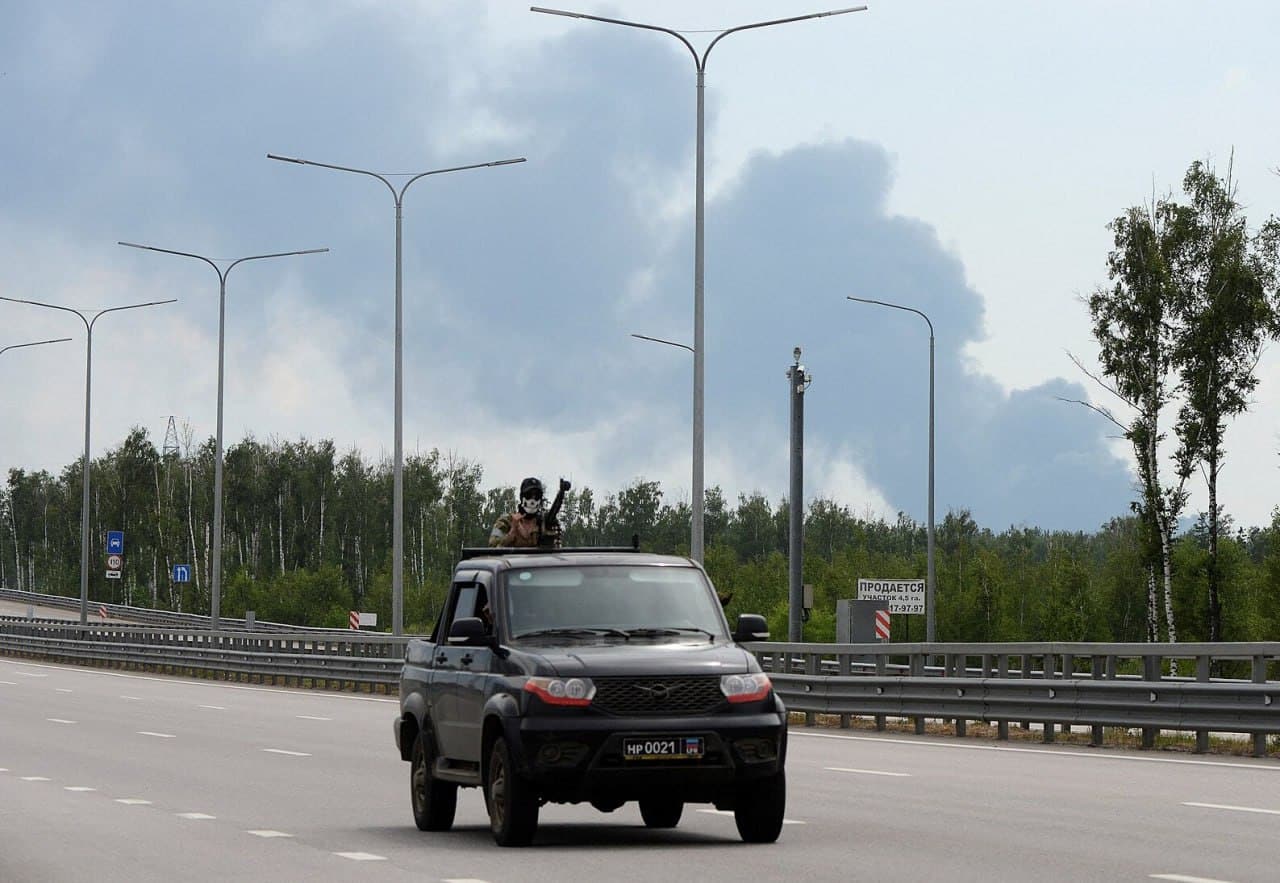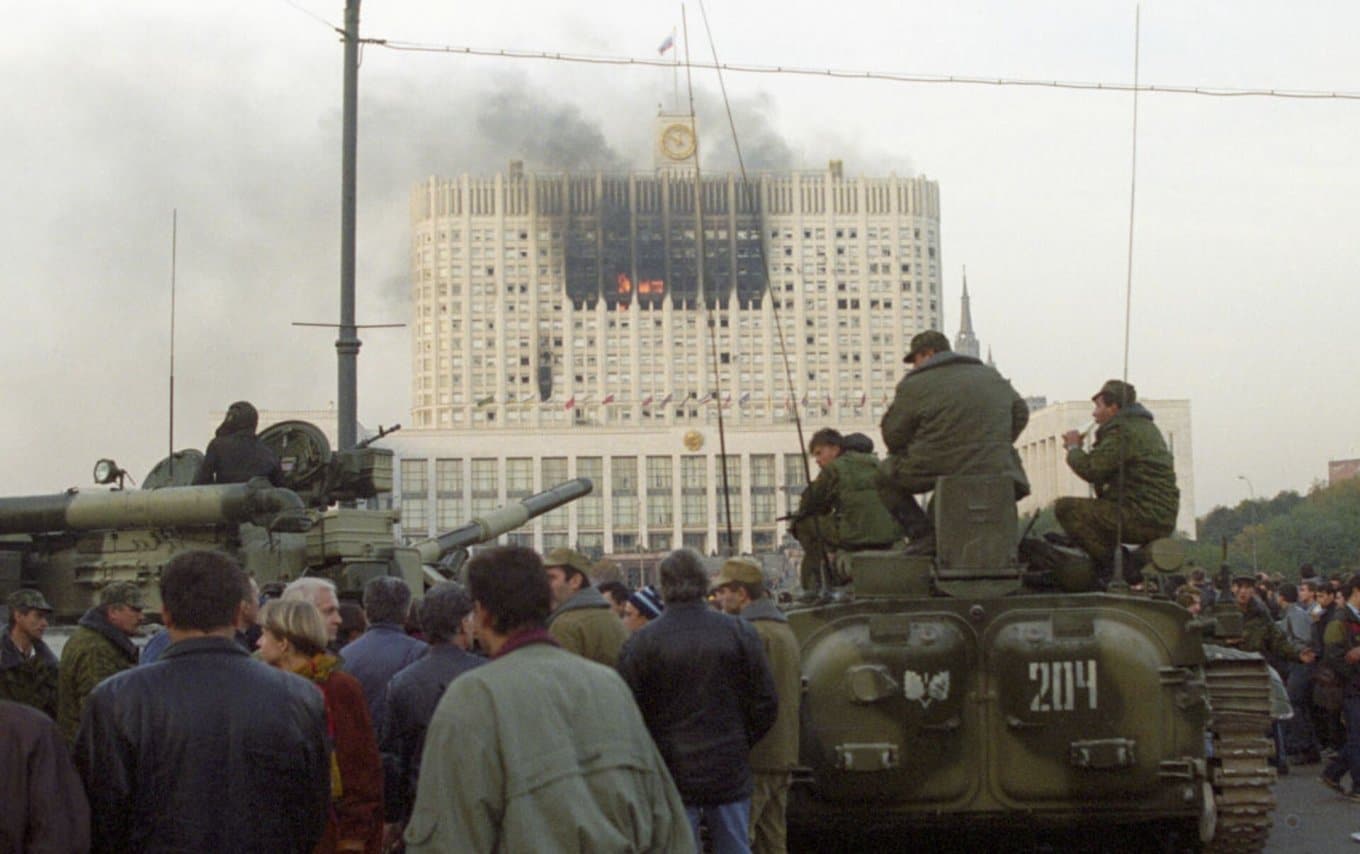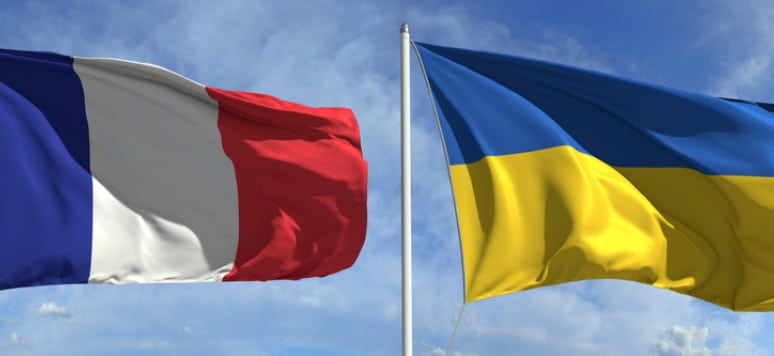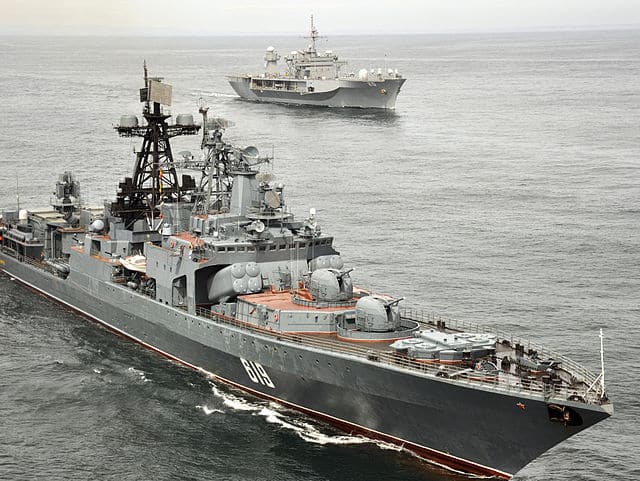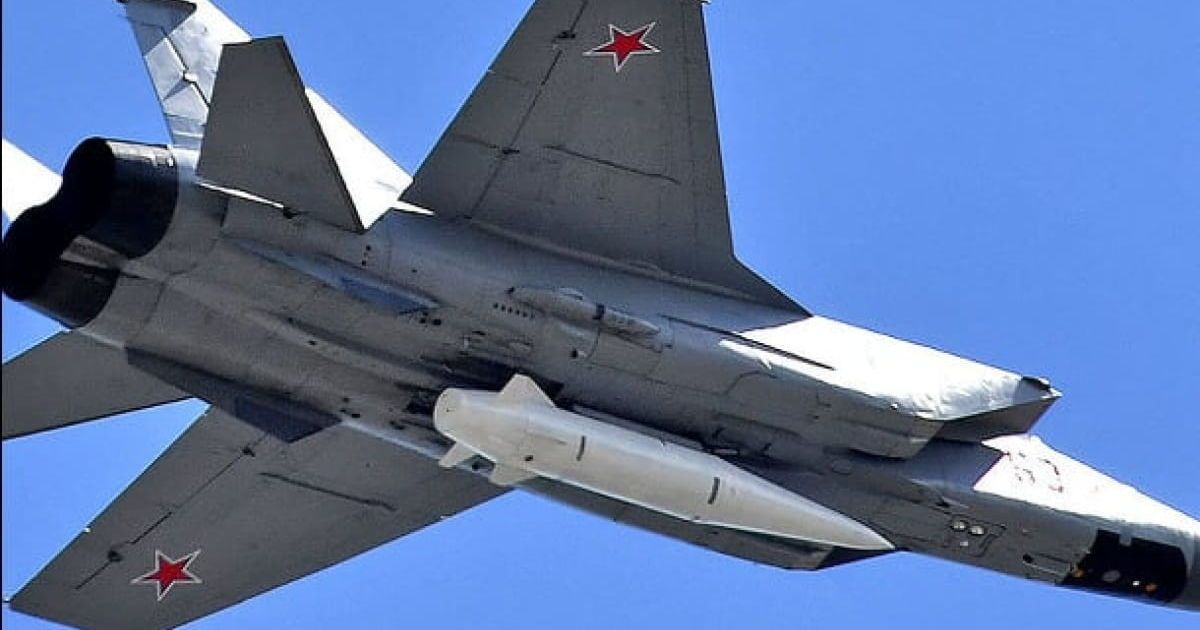The assessment of Prigozhin’s forces and the real situations when troops were involved in the struggle for power in Moscow itself provides a fairly clear answer. The forces he directed there indicate that the “March on Moscow” conducted during his coup attempt was unlikely to be realized.
Despite the leader of the Wagner Group announcing the presence of a 25,000-strong army, which is essentially equivalent to two motorized rifle divisions, the actual forces involved in the coup were significantly smaller. Specifically, all the equipment captured in photos and videos in Rostov-on-Don amounted to a few tanks, armoured personnel carriers, and armored cars, resembling more of a platoon-sized tactical group.
Source: Clash Report
In the videos showing the movement of vehicles towards Moscow, it is frequently observed that there are several dozen units of equipment, the majority of which are trucks. It is also important to understand what a column march entails. During such a movement on roads, a column of a standard mechanized battalion can stretch up to 5 km with a distance of 25-50 meters between vehicles. The Wagner Group adhered to a significant distance between their vehicles to avoid clustering and becoming an easy target for aviation.
Source: Clash Report
If even half of the forces claimed by Prigozhin were moving towards Moscow, meaning a hypothetical division, it would have stretched over a march distance of 150-200 km. And with an increased standard distance between vehicles, by the time the first vehicle entered the Moscow region, the last one would just be leaving Voronezh. We are leaving aside important considerations such as fuel supply, duration of daily marches on their own, provision of rest stops, and so on.
See also: Without remorse and regret: an interview with captives of the Wagner Group
Was there anything similar during Prigozhin’s coup attempt? Definitely not. Considering everything, at most, forces equivalent to two battalions, or rather, a few platoon-sized tactical groups, were moving towards the Russian capital. Is this sufficient to take control of a city like Moscow?
Source: Clash Report
A rather accurate answer would be to refer to numerous historical accounts of power struggles in Russia when military units entered Moscow. The earliest case in historiography dates back to 1953 with the arrest of the head of the People’s Commissariat of Internal Affairs Lavrentiy Beria, on June 26. In order to gain control over the city, Zhukov deployed units from two “elite” divisions, the Kantemirovskaya and Taman divisions, into the Russian capital. This was deemed necessary in case Beria retained control over its apparatus and clashes erupted with units of the People’s Commissariat of Internal Affairs, for which Zhukov reportedly had a bomber aviation division on standby.
Source: Clash Report
During the August coup in 1991, 4,000 troops, 279 infantry fighting vehicles, 148 armoured personnel carriers, and 362 tanks from loyal units were introduced into Moscow. Once again, the Taman and Kantemirovskaya divisions were involved, along with the 106th Airborne Division and the 27th Motor Rifle Brigade.
The White House assault in 1993 required the involvement of units from the same two “elite divisions” mentioned earlier, as well as the 119th Airborne Regiment. The exact number of troops deployed during that time, excluding other security forces, is unknown. In the latter two cases, the objective was only to suppress the coup plotters rather than to seize power. However, even in these situations, significant forces were involved.
Source: Defense Express
Relying on the forces of even several tactical battlegroups to seize power in the capital of the Russian Federation, with a population of 12 million people and dozens of key institutions to be brought under control, would be extremely optimistic. The only possible scenario for success would be in a vacuum of power, where Putin would already be dead and the entire governance system would be blocked by other coup participants from within.
However, this did not happen. The fact that Prigozhin did not anticipate the success of this “March on Moscow” directly indicates that he remained in Rostov-on-Don.
Originally posted on Defense Express. Translated and edited by the UaPosition – Ukrainian news and analytics website
See also: Wagner is already in Belarus: who is in greater danger?

